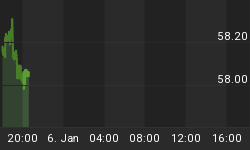Gold Nears Summer's End Unchanged, Four Reasons "Set to Rise" in September
THE PRICE OF GOLD rose in early London trade on Friday, heading into the long August Bank Holiday weekend unchanged from Monday and little changed from the start of the summer at $952 an ounce.
World stock markets also rose, taking London's FTSE100 index to fresh 10-month highs and pulling government bond prices lower.
Base metal, food-stuff and crude oil futures also gained.
"Gold volatility is set to rise as we head into September," wrote Walter De Wet at Standard Bank in a note to clients this morning, "[so] the underlying price should move either up or down.
"We expect the move to be higher," he says, citing four reasons.
- US stock-market volatility is typically highest from Sept-Nov, and is likely to spill over into other market, including gold;
- Jewelry demand in the fourth-quarter averages three times then third-quarter demand, a seasonal pattern that "should remain, irrespective of the actual level" and boost volatilty;
- Standard Bank also expects the Euro to rise vs. a weakening US Dollar, reaching $1.50 by year-end. The Gold Price typically moves in the same direction as Eur/USD;
- Finally, "The Gold Price at which the physical market is willing to buy has increased steadily over the past few months," providing not only good support but also reducing scrap-metal supply at higher levels.
Volatility in US stocks retreated this August to a 13-month low. Today the Euro touched a 3-week high of $1.4400, holding the Gold Price below €663 an ounce - unchanged from the start of the summer.
But "Ongoing deficiencies in the Indian monsoon continue to concern us about gold demand in this important market," wrote UBS metals strategist John Reade in a report this week.
Poor rains mean a poor harvest, implying low rural incomes and weak discretionary spending. This summer's rainfall has been 25% below the five-decade average. Already in 2009, gold imports to India - formerly the world's No.1 consumer market - had fallen by more than one half.
But "Though a monsoon is needed to spur agricultural incomes, it is not the only driving factor," said T. Gnanasekar, director of research at Commtrendz in Mumbai to the Economic Times earlier this month.
"We are not in the 1980s and '70s and '60s when rain played a very important role in our GDP through the agri sector," agrees Amitabh Chakraborty at Religare Capital Markets. "A lot of tertiary [service] sector jobs have been created."
Minimum grain prices and repayment holidays would boost rural incomes, he added. This year's government budget set aside the equivalent of $68 billion for cheap loans to India's farmers, Reuters reports - an increase of 13% from 2008.
Last Sunday's Ganesh festival marked the start of India's traditional gold-buying season, but with Indian Gold Prices moving above 15,000 Rupees per 10 grams today, "We haven't struck any deals since morning," the news wire quotes a Mumbai bank dealer. "Traders don't want to enter at these levels."
"I have many orders in between $930-940 an ounce," says another dealer quoted by Reuters.
"If prices move below $890 internationally and if the Rupee helps," says another, "there may be scramble for gold."
On the forex markets on Friday, the British Pound turned higher after losing almost 5% vs. the Euro in August - and rose 2¢ from yesterday's 6-week low against the Dollar - on a revision to Britain's GDP data.
Shrinking by 5.5% in the 12 months to July, rather than 5.6% as previously estimated, the UK economy still recorded its worse-ever annual drop.
The Gold Price for UK investors slipped back from Thursday's 10-week high of £586 an ounce.
The Japanese Yen ticked back meantime from yesterday's one-month high vs. the Dollar, after Tokyo reported faster-than-expected deflation in consumer prices for August, plus a 2.0% drop in national consumer spending during July.
Japanese Gold Futures ended the week 1% lower at ¥2,871 per gram.
















